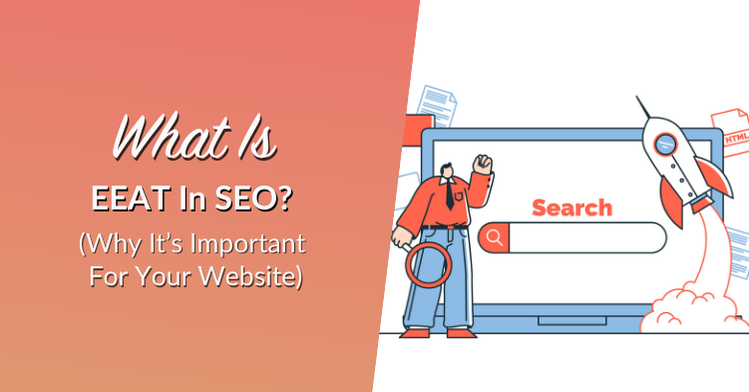
If you’ve ever typed something into Google and wondered why certain websites show up first, it’s not random. There’s something behind it called EEAT. So, what is EEAT in SEO? It stands for Experience, Expertise, Authoritativeness, and Trustworthiness. These are the things Google looks at when deciding if a page deserves to be shown to people.
Over time, EEAT became more and more important for websites, especially after Google started making changes like the helpful content update. This update focused on showing people-first content instead of pages only written to get clicks. If you’re running a business or writing content online, understanding what EEAT is in SEO is greatly significant, especially in how it can help you reach higher in search results.
What Is EEAT In SEO? (And What EEAT Stands For)
Before we go any further, let’s take a closer look at what each part of EEAT actually means. Since others might be wondering what is EEAT in SEO? It is how Google checks your content; knowing what each letter stands for is helpful. These four parts—Experience, Expertise, Authoritativeness, and Trustworthiness—work together to show that your website is safe, smart, and useful. When your content follows all of them, it becomes easier for Google to trust your site and show it to more people.
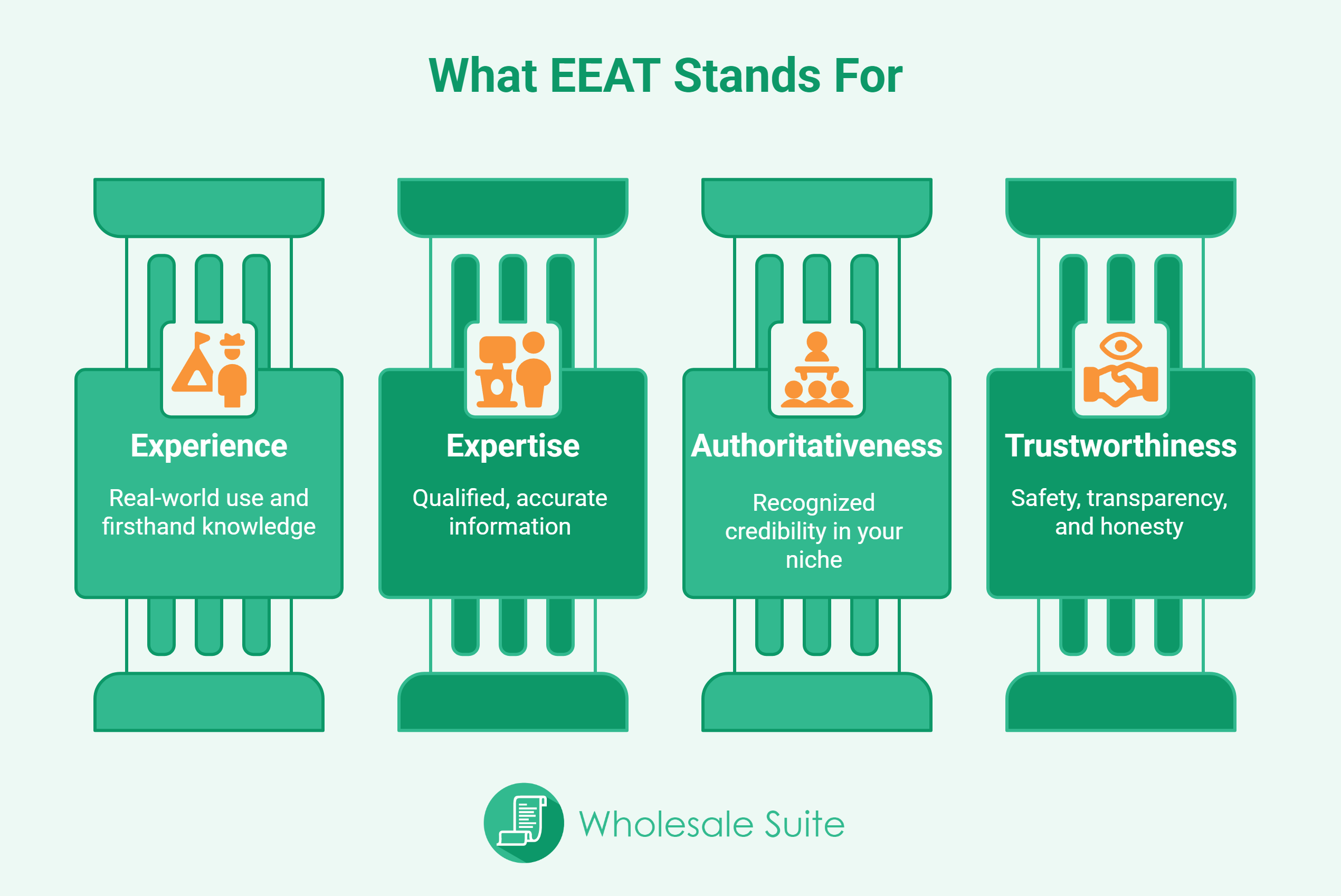
Experience: Real-world use and firsthand knowledge
Let’s start with the “E” in EEAT, which stands for Experience. This means the person writing the content should know the topic because they’ve done it themselves. For example, if someone writes about managing a wholesale store, it helps if they’ve actually managed one. When the person shares their own story or lessons from real life, it feels more honest.
Google likes this kind of people-first content because it’s helpful and based on real experience. It also shows that the writer is not just guessing. They’re speaking from what they’ve seen and done. And that’s one reason why experience matters for SEO.
Expertise: Qualified, accurate information
Next is Expertise. This part of EEAT is about knowing what you’re talking about. When you give advice or share tips, you need to be sure that the information is correct. Google wants to show pages written by people who understand the topic well. That could mean having formal training, years of practice, or even just deep knowledge in the subject.
It helps if you include facts, data, or steps that make sense. That’s because giving high-level, accurate answers is important for SEO. The more helpful your content is, the more people trust it. And when people trust your page, Google starts to trust it, too!
Authoritativeness: Recognized credibility in your niche
Now let’s talk about Authoritativeness. This means other people see you as a trusted source. For example, if your blog gets mentioned by other websites or shared by experts, that shows you have authority. It’s like when people ask for your opinion because they know you give good advice.
Google watches these signs closely. If many trusted sites point to your content, that adds weight. It tells search engines that your voice matters. Authority in your niche is another strong sign that your page deserves to rank. Again, this is why EEAT is such an important ranking factor in search engine optimization.
Trustworthiness: Safety, transparency, and honesty
Finally, we have Trustworthiness. This is a big one. If people don’t feel safe on your site, they leave. If your content seems unclear or sketchy, they won’t believe it. That’s why trust is one of the most important factors for SEO. You can build trust by adding contact pages, showing who wrote the article, sharing clear terms and privacy policies, and offering safe checkout options.
You can also use real customer reviews. These things show that you’re open and honest. Google wants to show pages that help people, not confuse them. So, being trustworthy is a big part of what makes content good in Google’s eyes.
Why Google Uses EEAT To Judge Content
Before showing any page in search results, Google wants to know if that content is helpful, safe, and made by someone who knows what they’re doing. That’s why the question “what is EEAT in SEO” has become so important for anyone creating content online. EEAT helps Google figure out if a page should be trusted or not. This section will discuss how EEAT works behind the scenes and why it matters for your website.

How EEAT helps Google filter high-quality content
Google gets billions of searches every day. That’s a lot of people looking for answers. But not every answer online is correct or useful. So, how does Google decide what to show first? It looks at signals like EEAT. If your content shows real experience, accurate info, and trust, then Google is more likely to show it in results. This is why EEAT is used to filter out low-quality or fake pages. Since the helpful content update, Google has focused more on people-first content, not content made to rank, but content made to truly help. EEAT helps Google find those better pages.
The role of EEAT in ranking decisions
Now, let’s talk about how EEAT affects rankings. While EEAT is not a direct setting you can turn on, it acts like a guide. Google uses it to decide if your page is worth showing. For example, a blog post written by an expert with real background knowledge has a better chance of ranking than one made by someone who just copied from other sites. EEAT is part of the process Google uses to find the best answer. So, if you’re still asking what is EEAT in SEO, it’s the reason some pages go up in results while others drop. When you give good details and explanations that people can trust, you’re helping your page rise.
Google’s Search Quality Rater guidelines explained
Google doesn’t guess when it comes to quality. It actually has a team of real people called Search Quality Raters. These people follow a guide called the Search Quality Rater Guidelines. Inside that guide, EEAT is a key part. These raters don’t change rankings directly but help Google test what works. If raters say a page with strong EEAT feels more helpful, Google takes that info and uses it in future updates.
One big change from this was the content update that rewards websites with clear authors, expert input, and trust signs. So EEAT isn’t just theory—it helps shape how Google works.
How EEAT Affects SEO Performance
Now that you understand what EEAT means and how Google uses it, the next step is to see how it affects your website’s performance. If you’re still asking what is EEAT in SEO, this section shows how it connects directly to your search rankings. EEAT can distinguish between your page showing up on page one or getting lost.
1. Impact on organic search rankings
Pages that follow EEAT guidelines tend to rank higher. That’s because they give users what they’re looking for. When your website has high-level content, shows real experience, and builds trust, Google sees it as more helpful. And Google always wants to show helpful pages first. It’s not just about keywords anymore. It’s about how your site answers questions clearly and honestly. So, if you want better spots in search, building EEAT is important for SEO.
You may also read: How To Write SEO Product Descriptions (With A Boost From AI).
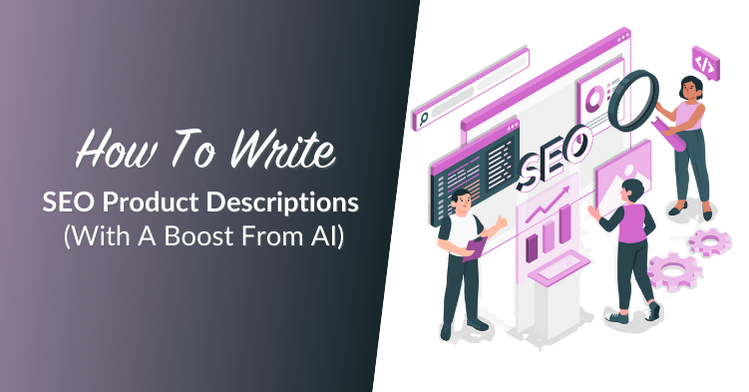
2. Relevance for YMYL (Your Money or Your Life) websites
Some websites discuss health, money, safety, or other serious topics. These are called YMYL sites. For these, EEAT is even more important. Google checks them more closely because bad information could hurt someone. If your site discusses these topics, your content must show expertise, experience, and trustworthiness. Google wants to be careful, giving higher spots to sites that meet EEAT standards. This is a big reason why knowing what is EEAT in SEO matters if you work in those fields.
3. Case studies and known algorithm updates
Over the years, many websites have seen changes in rankings after Google released a content update. Sites that focused only on SEO tricks lost traffic. Meanwhile, websites that added author names, shared real stories, and gave useful information saw better results. These changes weren’t random. They were part of updates that made EEAT more important. One of those was the helpful content update, where Google started rewarding people-first content. This proves that EEAT isn’t just a theory—it changes how your content appears in search.
Does EEAT Matter For B2B And Ecommerce Sites?
If you’re running a B2B business or an ecommerce store, you might be wondering—”What is EEAT in SEO and does it even apply to me?” The answer is yes! EEAT is not just for blogs or news websites. It also matters for online stores and business websites. In this section, we’ll explain why EEAT is a big deal for your shop pages, content, and About page.
Why trust signals are critical for buyers
People don’t just want cheap prices. They also want to know they’re buying from someone they can trust. That’s where EEAT comes in. If your product pages look unclear or messy, buyers might leave. But if your site has product reviews, secure checkout, and clear information, it sends strong trust signals. These small things show that your business is real and safe. That kind of trustworthiness is not just good for your customers; it’s also important for SEO. Google wants to show sites that help people feel confident about where they click.
How product pages, blogs, and about pages build EEAT
Your whole website helps build EEAT, not just one page. For example, your product pages should have updated prices, helpful photos, and clear shipping info. Your blog can explain how your products work or share industry tips. Your About page can talk about how long you’ve been in business or what makes your team qualified.
These pages don’t have to be fancy. They have to be real, helpful, and made with care. This is how you create people-first content showing experience and expertise—two things that always matter for SEO.
Ultimately, scaling this people-first approach requires consistency across your entire site. It’s a good idea to partner with a reliable SEO team, as this can ensure that every page consistently reflects your brand’s expertise and trustworthiness.
The role of customer reviews and industry recognition
What other people say about your business matters. When buyers leave reviews, they’re showing Google (and other people) that they’ve had real experiences with you. If those reviews are positive, they help build your trustworthiness. If your brand has been featured in trade shows, blogs, or press articles, that adds authoritativeness, too! These are called trust signals, and they tell Google that your business is known and respected.
So, if you’re still asking what EEAT is in SEO, consider it everything that proves you’re real, skilled, and worth buying from.
You may also read: Use Wholesale Customer Reviews To Boost Sales: 3 Key Tips.
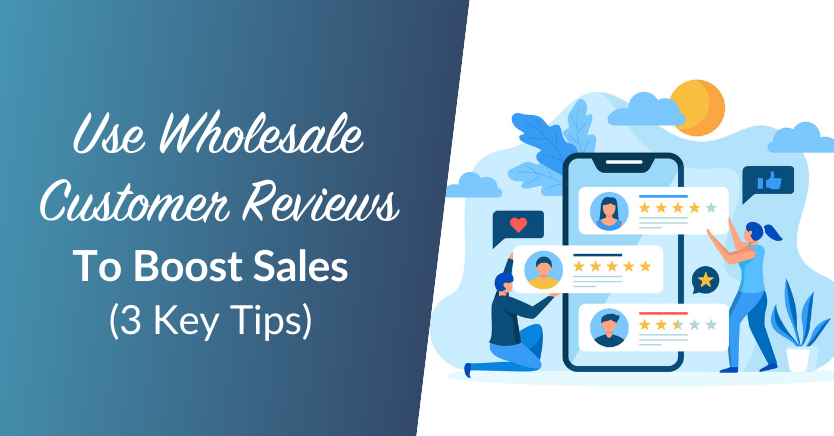
How To Improve EEAT On Your Website
Now that you know what is EEAT in SEO, let’s talk about how you can actually show it on your site. You don’t need to be famous or have a big team. You need to show that your content is made by real people, with real knowledge and good intentions. This section will look at simple ways to add experience, expertise, authority, and trust to your site.
1. Show real experience with testimonials and case studies
Share that story if you’ve helped a customer or solved a problem. Use testimonials to show how someone used your product or service and what changed for them. You can also make case studies with simple results and quotes. This shows real-world experience, not just opinions. When people see that others have worked with you, they feel safer. And when Google sees that your content comes from real stories, that helps with your trustworthiness and experience.
If you want to see how you can showcase your case studies, you may read these case studies we did for Wholesale Suite:
2. Build expert content with credentials or sourcing
Who writes your content matters. Add their name and title if someone has been in the industry for years or has proper training. Show their experience by adding a short bio under the article. You can also link to trusted sources that back up the points in your content. This adds expertise and helps Google understand that your content is not just random; it comes from someone who knows the topic well. This type of writing is considered people-first content and works better with every content update Google releases.
3. Strengthen authority through backlinks and mentions
Authority grows when others talk about you. If you’ve been mentioned in industry blogs, included in buyer guides, or linked from trusted websites, that shows Google you matter. You can earn these links by writing helpful blog posts, working with partners, or sharing content on social media. Every time someone links to you, it tells Google that your site has high-level value. That’s why authoritativeness helps your page perform better in search engine optimization.
4. Build trust and experience in your product listings
If you’re running an online store, writing clear and helpful product descriptions takes time. But with the Product Description Assistant from StoreAgent, you can make it easier to create content that matches what Google looks for. This tool helps you write descriptions that sound real, explain the product well, and speak to actual buyers.
You may also read about “SEO Product Descriptions: How To Write Them And Speed Up The Process With AI.”
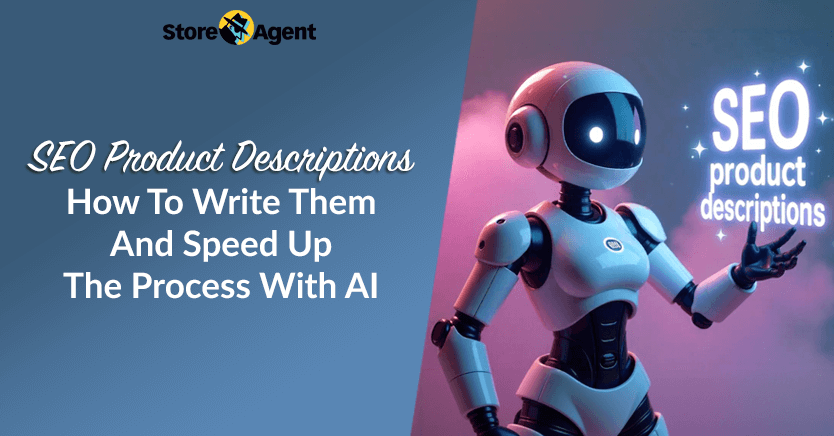
The assistant uses simple prompts to guide you in writing better product pages instead of copying descriptions from suppliers or rushing to publish something basic. It lets you easily highlight product features. When your product pages provide honest, clear, and complete details, both your customers and Google feel more confident about your store.
Frequently Asked Questions
What is the Google E-E-A-T concept?
The Google E-E-A-T concept checks if a page is safe, helpful, and written by someone who knows the topic well. It stands for Experience, Expertise, Authoritativeness, and Trustworthiness. These are the four things Google looks at when deciding if a page should rank higher in search results. So if you’re still asking what is EEAT in SEO, this is your answer. Google wants to show pages that were made for people, not just search engines.
Is E-E-A-T a ranking factor?
EEAT is not a direct setting like page speed or mobile friendliness. But it does help Google decide which pages are better than others. That means EEAT works like a guide. It helps search engines choose what to show first. So yes, EEAT is a ranking factor because pages with strong EEAT usually get better spots in search. SEO must follow what EEAT stands for and use it when creating content.
What are the levels of E-E-A-T?
Google does not give EEAT a score or level like “good” or “bad.” But it does look at how well your content shows experience, how clear your facts are, how trusted your site is, and how people talk about your business. The better your EEAT, the better your chances of ranking. That’s why even a small improvement, like adding author names or showing real customer reviews, can help. Each piece of content you publish should show that it’s made by someone real, which matters for SEO today.
Takeaways
After working on dozens of SEO content projects for B2B and ecommerce websites, we’ve seen one clear pattern: Websites that follow EEAT well don’t just rank better—they earn more trust from real customers. So, when someone asks what is EEAT in SEO, the answer isn’t just a list of letters. It’s a full picture of how your site shows up in Google’s eyes. EEAT is about how your site feels to people and search engines. It’s not one thing you turn on. It’s something you build over time.
In this article, we discussed everything you need to know about EEAT in SEO:
- What is EEAT in SEO?
- Why Google uses EEAT
- How EEAT affects SEO
- Does EEAT matter for B2B and ecommerce?
- How to improve EEAT on your website
So let’s bring it all together. What is EEAT in SEO? It’s a guide that helps you make better content. It stands for experience, real knowledge, and openness about who you are. It shows that your content is made to help people, not just fill space. If you want to do better in search results, start small. Add author names. Use customer reviews. Write descriptions that feel real. When your content is built with care, backed by truth, and focused on helping, it sends the right signals. And that’s exactly what matters for SEO today.
Still wondering what is EEAT in SEO and how it applies to your website? Drop your questions in the comments—we’re here to help!






